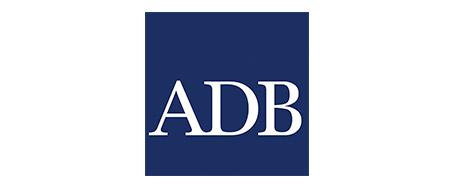Agencies
Asian Development Bank and Kyrgyz Republic

About the Kyrgyz Republic and ADB
The Kyrgyz Republic joined ADB in 1994, and ADB Kyrgyz Resident Mission was established in April 2000, enhancing ADB’s capacity for policy dialogue, programming, and project implementation. Since joining ADB, the Kyrgyz Republic has received $791.2 million in Asian Development Fund (ADF) loans, $256.1 million in ADF and Japan Fund for Poverty Reduction Program (JFPR) grants, and $43.2 million in technical assistance.
About the Asian Development Bank
ADB is a multilateral development bank owned by 67 members, 48 from the region and 19 from other parts of the world. ADB’s main instruments for helping its developing member countries are policy dialogue, loans, equity investments, guarantees, grants, and technical assistance (TA). In 2011, lending volume was $12.61 billion (104 projects), with TA at $148 million (212 projects) and grant-financed projects at $614 million (23 projects). In addition, $7.7 billion was generated in direct value-added cofinancing in the form of official loans and grants and commercial cofinancing such as B loans, risk transfer arrangements, parallel loans, and cofinancing for transactions under ADB’s Trade Finance Program.
ADB-Supported Projects and Programs
- Roads play a crucial role for the landlocked Kyrgyz Republic by ensuring cost-effective access to regional and domestic markets, generating employment, and providing services. ADB assistance focused on rehabilitation of the major transport corridors that are critical in regional trade, particularly with the People’s Republic of China (PRC) and the Russian Federation. By 2010, 765 kilometers (km) of regional corridors had been rehabilitated with support from ADB and an additional 310 km will have been rehabilitated by 2015. These investments have already reduced transport costs and times.
- Provision of basic services such as safe drinking water, sanitation, and sewerage for rural and urban populations is important to improve living standards and public health. After the transport and information and communications technology (ICT) sectors, urban development occupies the second largest share of ADB’s assistance to the country, focusing on rural and urban water supply and sanitation in Chui, Issyk-Kul, Osh, Jalal-Abad, and Batken regions.
- The Power Sector Improvement Project, approved last year, helps achieve the country’s strategic vision and brings more reliability, transparency, and accountability to the sector, while the follow-on project will improve regionally important generation facilities. Future ADB projects may support urgent needs for the rehabilitation of generation, transmission, and distribution facilities and the development of renewable-energy plants such as small hydro, wind, and solar.
- The Investment Climate Improvement Program focuses on reforms that will reduce entry and exit barriers, lower compliance costs for businesses, and create a clear legal and regulatory framework for public–private partnerships in infrastructure.
- ADB has been a key investor in education, and secondary school enrollment has increased to 97% in 2009 from 95% in 2005. Total social sector assistance amounted to $72.4 million.
- In education, ADB-supported reforms developed a new student-centered, skills-oriented curriculum for the school education (grades 1–11) and introduced the new curriculum in the primary school (grades 1–4). More than 500,000 textbooks were distributed and more than 17,000 teachers trained. Hardware and laboratory equipment were delivered to 90 rehabilitated schools and seven teacher training centers.
http://www.adb.org/KyrgyzRepublic/default.asp
Business Centre "Orion" - 6th floor; 21 Erkindik blvrd.
Bishkek, 720040
Tel: (+996 312) 986561
Fax: (+996 312) 986761
Business Hours: 8.30-5.30 Monday-Friday
Email: adbkyrm@adb.org